#image quality
Text
This week I've been tinkering with some code modifications to Ship of Harkinian (OoT source port) to add all sorts of nerdy image settings to control aspect ratio, resolution and scaling.
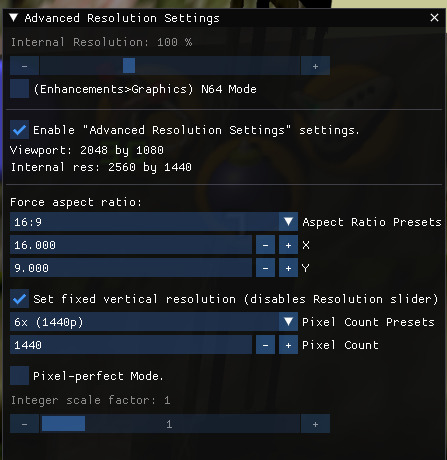
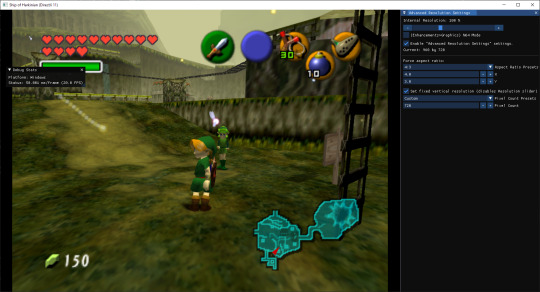

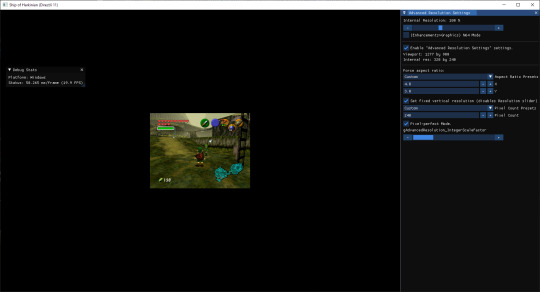
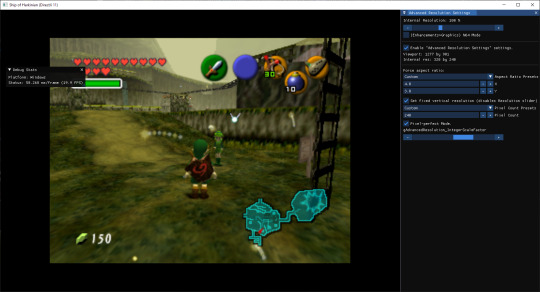
At this stage I'd say I've implemented most of the things I've wanted, barring a few other additions and refinements.
What I'm not sure about is if I feel comfortable actually submitting a pull request for this or not. – Reason being I'm relearning C/C++ coding as I go with this, and sure this isn't a professional project or anything and my code probably follows best practices just fine, but anything that isn't the UI is actually all happening on the Libultraship side, which is being used in increasingly more projects besides SoH and the standards for code quality are much higher.
Though with that said, the way this is set up I suppose if you don't implement controls in the UI then it's all completely ignorable.
And although these are all pretty niche features, I'm sure I'm not the only one that'll appreciate them. – I've seen plenty of requests for aspect ratio controls, and integer scaling in particular will be really useful for anyone using scanline or TV shaders.
I dunno if anyone who follows me on Tumblr cares about this stuff, but lemme know if you have any feedback on this, or any feature requests of your own. I'm definitely not done messing around with Ship's code.
#ship of harkinian#harbour masters 64#nintendo 64#game development#gamedev#in general i've been feeling the game dev itch lately.#image quality#n64 sourceports#pc gaming#the legend of zelda#ocarina of time
32 notes
·
View notes
Text
Has anyone run into an issue when uploading images to Tumblr with it appearing fuzzy in the dashboard view, but clear once you tap/click to expand it?
I know my image is high res and an appropriate size. I’ve never run into this before and I’m really struggling to figure it out as I’ve recreated the issue on multiple devices. 😭
If not, can anyone tell me if my last few art posts look fuzzy in their dash, but clear when they expand them? 🙏🏽
#rocket talks#tumblr issues#tumblr staff#artists on tumblr#image quality#somebody plz help I’m going crazy#like why does it look like that
8 notes
·
View notes
Photo
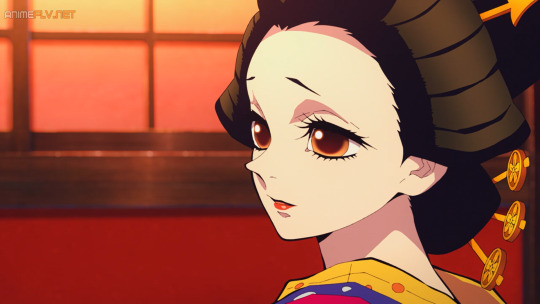



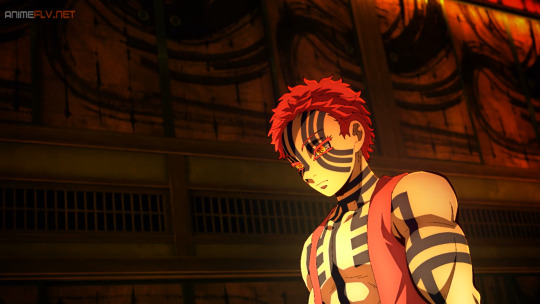
Image quality, god.
#anime#animeserie#serieanime#kimetsu no yaiba#demon slayer#tanjiro kamado#tanjiro kny#tanjiro#image quality#so good
8 notes
·
View notes
Text
Weird But Insanely Wonderous: Laowa 6mm f2 Zero-D MFT Review
It's not a fisheye! Crazy, right?
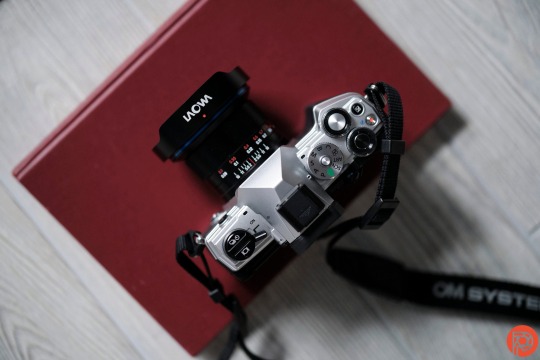
View On WordPress
#fisheye lens#image quality#Laowa#Laowa 6mm f2 Zero-D MFT#lens#lenses#micro four thirds#Photography#street photography#ultra-wide
2 notes
·
View notes
Text
Fuck. is there any way to make it so tumblr doesn’t conver png to jpgs? Part of my “signature” is saving multiple screens as one image with a transparent background behind them.
2 notes
·
View notes
Text
#ai image#photo enhancement#image quality#image enhancement#ai photo editor#ai generated#trick#review
0 notes
Text

this drawing started off as tv crowley and aziraphale dressed like their book cover counterparts, but then I got carried away and it turned out... not being exactly that anymore 🤷🏻♀️
so... late 80s/early 90s au? (aka. literally the book lol)
#good omens#good omens fanart#aziracrow#aziraphale#crowley#anthony j crowley#crowley x aziraphale#ineffable husbands#neil gaiman#I wasn't even planning on posting this one#I just started drawing it randomly with no plan bc I wanted a new wallpaper for my phone lol#but I liked how it turned out#so here it is ✨#crowley looks like james bond meets mafia boss#and the idea of aziraphale dressed like a proper university professor in all but the sneakers is pretty funny to me#bc that's exactly how I dress irl 😶#also tumblr's image compression absolutely crushed the quality fml
9K notes
·
View notes
Text
Does anyone have any tips for making tumblr not ruin my image quality? Every time I upload my art it looks so crunchy. Help please T^T
0 notes
Text
Learning about the Doctor Who specials' expanded budget: oh no, what if they overuse CGI to look more 'professional' and high-budget?
The first scene of the Doctor Who Special:
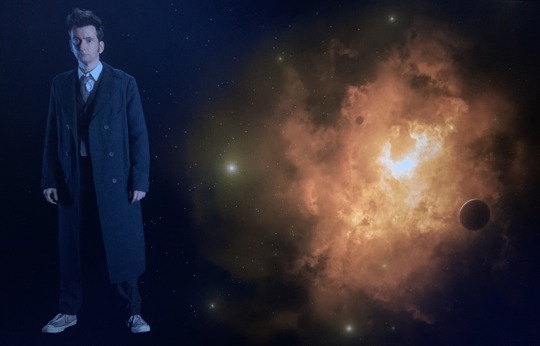
#:D#[ID: The Fourteenth Doctor looking tired in front of a green screen of space \End ID]#it's still just as cheesy and silly as it was during 10's run#doctor who#fourteenth doctor#the image looks like something a fan would make tbh#the only very jarring part of the budget was how nice quality the camera was throughout the episode#I kind of wish it was a little less crisp because it made everything look a bit off in a way#but I also haven't watched 13's run so maybe it's not as stark of a jump as it felt for me#10 especially always felt very fuzzy and warm in terms of camera quality#tenth doctor#the star beast#twilight-zoned-out#doctor who spoilers#dw#dw spoilers
13K notes
·
View notes
Text
Tumblr keeps killing the quality of the images I post to my other blogs. It keeps making if them lack detail and get grainy
0 notes
Text
Choosing the Right Machine Vision Lens: A Comprehensive Guide
Machine vision technology has rapidly evolved, and selecting the appropriate lens for your application is now more critical than ever. With the wide variety of lenses available, choosing the right one can be a daunting task. However, by considering a few key factors, you can make an informed decision that will significantly impact the performance and image quality of your machine vision system. In this comprehensive guide, we will delve into the various aspects of selecting the perfect machine vision lens to meet your specific needs.
Fixed, Varifocal, or Zoom:
The first decision to make when choosing a machine vision lens is whether you need a fixed, varifocal, or zoom lens. Each of these options has its own set of advantages and is suited for different applications.
Fixed Lenses: Fixed lenses are an excellent choice when you have a consistent working distance and require sharp, high-quality images. These lenses have a fixed focal length, meaning they do not offer the flexibility to adjust the zoom or focus. If your application involves stationary objects or a controlled environment where the working distance remains constant, a fixed lens is a cost-effective and reliable choice.
Varifocal Lenses: Varifocal lenses are designed for situations where the subject is in motion or may require frequent refocusing. These lenses offer the flexibility to adjust the focal length and focus, making them ideal for applications that involve objects at varying distances. Varifocal lenses can save time and effort by allowing you to adapt to changing conditions without replacing the lens.
Zoom Lenses: Zoom lenses are the most versatile of the three options. They can adapt to distant subjects by changing the focal length, providing you with the ability to zoom in or out as needed. This adaptability is particularly valuable in applications where the working distance is not constant, or when you need to capture fine details in both nearby and faraway subjects. While zoom lenses offer flexibility, they are typically larger and more complex, which can result in a higher cost.
Focal Length and Focus:
The focal length of a machine vision lens plays a crucial role in determining the field of view (FOV) and the magnification of the image. Understanding how to choose the right focal length is essential for capturing the desired image.
Field of View (FOV): The focal length directly affects the FOV. A longer focal length will provide a narrower FOV, which means the lens will capture a smaller area with greater detail. Conversely, a shorter focal length lens will result in a broader FOV, allowing you to capture a larger area but with less magnification. When selecting the focal length, consider the size of the objects or areas you need to capture in your application.
Magnification: In addition to FOV, the focal length also determines the magnification of the image. Longer focal lengths result in greater magnification, making them suitable for applications where fine details are essential. Shorter focal lengths, on the other hand, provide lower magnification but are ideal for applications where capturing a larger area is a priority.
To choose the right focal length for your machine vision lens, you need to have a clear understanding of your application's requirements and objectives. Analyze the size and details of the objects you are inspecting to determine the optimal focal length for your specific case.
Aperture and Lighting:
The relationship between aperture and lighting is critical for achieving the desired depth of field and image quality in machine vision applications.
Aperture: The aperture of a lens controls the amount of light that enters the camera sensor. It is typically represented by an f-number (e.g., f/2.8). A smaller f-number indicates a wider aperture, allowing more light to enter, while a larger f-number means a narrower aperture, which restricts the amount of light. Selecting the right aperture is essential to achieve the desired depth of field.
Depth of Field (DOF): The depth of field is the range within which objects appear acceptably sharp in an image. It is influenced by the aperture size, with wider apertures producing a shallower DOF and narrower apertures providing a deeper DOF. The choice of aperture depends on your application's requirements. If you need to capture fine details in a specific focal plane, a narrow aperture might be suitable. For situations where multiple objects at varying distances must be in focus, a wider aperture may be preferable.
Consider the lighting conditions of your environment, the specific requirements of your application, and the depth of field you need to achieve when selecting the aperture for your machine vision lens.
Resolution and Accuracy:
When it comes to machine vision, resolution and accuracy are paramount. To ensure the best results, you must find a lens that offers the highest resolution for your subject or operation. Consider various factors, including image clarity, application demands, available options, and cost-benefit analysis.
Resolution: Resolution refers to the lens's ability to capture fine details in an image. Higher resolution lenses produce sharper and more detailed images, which can be crucial for applications that require precision, such as quality control and measurements.
Application: The specific application of your machine vision system will dictate the level of resolution required. If you are inspecting small electronic components, you will need a lens with exceptional resolution to detect defects. On the other hand, if your application involves monitoring large industrial processes, a lower resolution lens may suffice.
Cost-Benefit Analysis: While higher resolution lenses offer superior image quality, they can be more expensive. Therefore, it's essential to perform a cost-benefit analysis to determine the optimal balance between resolution and cost for your application.
By carefully considering these factors, you can select a machine vision lens that provides the resolution and accuracy required for your specific needs.
Working Distance:
Selecting the correct working distance is crucial when choosing a machine vision lens. Designers calculate the needed working distance using various factors, including focal length, the length of the inspected object, sensor size, and the size of the objects being observed.
Focal Length and Working Distance: The focal length of the lens plays a significant role in determining the working distance. A longer focal length results in a greater working distance, while a shorter focal length is associated with a shorter working distance. To ensure that the lens can effectively capture the desired field of view, it is essential to match the focal length to the working distance required for your application.
Object Size: Another factor to consider is the size of the objects you are inspecting. If your application involves large objects, you may need a lens with a longer working distance to maintain a suitable field of view.
By carefully calculating the working distance based on the focal length, object size, and other parameters, you can ensure that the lens you choose is perfectly suited to your application's requirements.
Sensor Compatibility:
Different sensors require different lenses, and it's crucial to select a lens that is compatible with your camera's sensor type and size. Sensor compatibility directly affects the image quality and the lens's ability to cover the desired field of view.
Sensor Size: The size of the camera sensor influences the field of view. Smaller pixel sensors require higher resolution lenses to achieve better image quality, as they capture more detail in a smaller area. In contrast, larger sensors require larger lenses to cover the same field of view.
Sensor Type: The type of sensor, whether it's a CCD or CMOS sensor, also plays a role in sensor compatibility. Different sensors have varying sensitivity to light and may require adjustments in the lens to optimize image quality.
When selecting a machine vision lens, consider the sensor size and type of your camera to ensure that the lens can effectively cover the desired field of view and produce high-quality images. Matching the lens to the sensor is essential for achieving the best results in your machine vision application.
Camera, Mount, and Location:
Compatibility with your camera and its physical location is another critical aspect of choosing the right machine vision lens. Ensuring that the lens aligns with the camera's sensor type and mount is essential for seamless integration.
Camera Sensor Type: Confirm that the lens is compatible with the sensor type of your camera, whether it's a CCD or CMOS sensor. Mismatched sensors and lenses can result in reduced image quality and potential compatibility issues.
Lens Mount: Different cameras use various lens mounts, such as C-mount or CS-mount. Ensure that your lens choice matches the camera's lens mount to facilitate easy installation. An incompatible mount can lead to alignment problems and may require additional adapters or adjustments.
Camera Location: Consider the physical location of the camera in your machine vision system. If the camera is difficult to access, you may want to opt for a lens with remote focus, iris, and zoom control capabilities. For instance, the LensConnect Series offers power and control through USB, allowing you to remotely adjust focus, zoom (in the case of varifocal lenses), and iris. This feature can simplify camera setup and maintenance, particularly in industrial or hard-to-reach environments.
Choosing a lens that seamlessly integrates with your camera and its location is essential for ensuring the optimal performance of your machine vision system.
Conclusion:
Selecting the right machine vision lens is a crucial decision that directly impacts the performance and image quality of your vision system. Before making your choice, consider the following key factors:
Fixed, Varifocal, or Zoom: Determine whether your application requires a fixed, varifocal, or zoom lens based on the working distance and subject characteristics.
Focal Length and Focus: Choose the focal length that aligns with your field of view and magnification requirements.
Aperture and Lighting: Select the appropriate aperture to achieve the desired depth of field and image quality based on your lighting conditions.
Resolution and Accuracy: Consider the application's demands and perform a cost-benefit analysis to determine the required resolution for your lens.
Working Distance: Calculate the working distance based on focal length, object size, and other factors to ensure the lens effectively captures the desired field of view.
Sensor Compatibility: Match the lens to your camera's sensor type and size to optimize image quality.
Camera, Mount, and Location: Ensure compatibility between the lens and your camera's sensor type, lens mount, and the camera's physical location.
By thoroughly evaluating these factors and understanding your specific application's needs, you can make an informed decision and select the best machine vision lens to achieve exceptional results in your machine vision system . Information flows from the lens first, so choosing the right lens is a fundamental step in the success of your machine vision project.
To Know More About Machine Vision Lens Visit:http://mvrpl.com/index.html
#Machine vision lens#lens selection#focal length#aperture#resolution#working distance#sensor compatibility#image quality#camera integration#varifocal lens#fixed lens#zoom lens.
0 notes
Text
ugh im trying to upload art but i can’t get the quality right if im using procreate which image type should i use?
1 note
·
View note
Text

#superwholock#ourgoodshadows#david tennant#supernatural#spn#doctor who#sherlock#our flag means death#ofmd#good omens#what we do in the shadows#wwdits#i’ve connected the dots#click for better quality image#10k#i think i have to tag this as greatest hits because it’s currently at 10k#anyways#greatest hits#fuck it 11k#14k#15k???????#16k
19K notes
·
View notes
Text
More Beautiful Than I Estimated! Panasonic 18mm f1.8 Review
It's got a medium format look!

View On WordPress
#autofocus#Bokeh#build quality#ease of use#ergonomics#image quality#leica#Leica SL2s#panasonic#panasonic 18mm f1.8#sharpness#sigma#weather sealing
2 notes
·
View notes
Text


Wanted to draw the gang in my styleee
#had to reupload because tumblr killed the image quality lol#hazbin hotel#hazbin hotel fanart#alastor#husk#charlie morningstar#Vaggie#niffty#sir pentious#angel dust#my doods
7K notes
·
View notes
Text
Canon EOS 5D MarkV: A Top-of-the-Line DSLR Camera for Photography Enthusiasts
Canon EOS 5D MarkV – Best in Class for vLogging
The Canon EOS 5D Mark V, a highly acclaimed full-frame digital SLR camera, offers versatile shooting capabilities in various lighting conditions. Paired with the Canon EF 100mm f/2.8L IS USM Macro Lens, it provides exceptional image quality and a range of features for photographers. With an impressive rating of 4.7 out of 5 and over 910 reviews,…

View On WordPress
0 notes